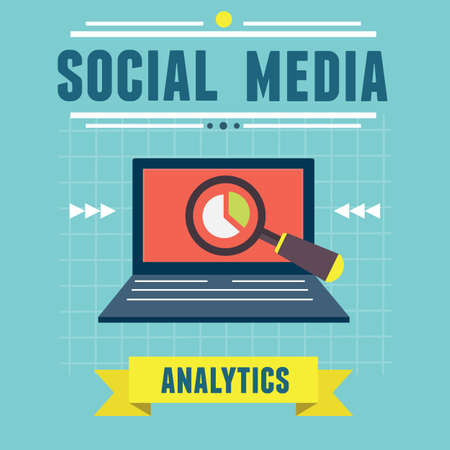Understanding Social Signals in SEO
In the world of digital marketing, social media has become more than just a way to connect with friends—it’s now a key player in how websites perform in search engine rankings. One of the ways this happens is through something called “social signals.”
What Are Social Signals?
Social signals refer to the engagement your content receives on social media platforms. These include likes, shares, comments, retweets, and other interactions that show people are interested in what you’re posting. Search engines like Google don’t use these signals as a direct ranking factor, but they can influence your SEO efforts indirectly by boosting visibility and traffic.
Common Types of Social Signals
| Platform | Signal Type | Description |
|---|---|---|
| Likes, Shares, Comments | User interactions that indicate content popularity and engagement. | |
| X (formerly Twitter) | Retweets, Likes, Mentions | Signals that reflect how much your content is being talked about or shared. |
| Likes, Comments, Shares | Visual engagement that can increase brand awareness and referral traffic. | |
| Reactions, Shares, Comments | B2B-focused interactions that can lead to valuable backlinks and professional exposure. |
How Social Signals Connect to SEO
Even though Google has stated that social signals aren’t a direct ranking factor, they still play a role in off-page SEO. Here’s how:
- Increased Content Visibility: The more your content is shared on social media, the more people see it—and the higher the chance someone links back to it from their website or blog.
- Improved Brand Awareness: A strong presence on social platforms helps build trust and recognition, which can lead to more branded searches on Google.
- Higher Engagement Rates: Posts that get more interaction tend to be seen as valuable content, which can influence what people choose to link to or reference online.
Why Social Signals Matter More Today
The rise of influencer marketing, mobile browsing, and real-time news sharing has made social media an essential part of any off-page SEO strategy. As users rely more on peer recommendations and trending content from their feeds, having strong social signals is no longer optional—it’s critical for staying competitive online.
Key Takeaway:
If your content is getting attention on social media, it means its resonating with real people. That kind of traction can lead to more backlinks, increased web traffic, and ultimately better search rankings—even if the signals themselves aren’t counted directly by search engines.
2. The Connection Between Social Media and Off-Page SEO
When it comes to off-page SEO, most people think about backlinks from other websites. But did you know that your activity on social media platforms like Facebook, Twitter, Instagram, LinkedIn, and even TikTok can also impact your search engine rankings? While social media signals may not directly influence Googles ranking algorithms, they do play a powerful indirect role in boosting your online visibility.
How Social Media Activity Supports Off-Page SEO
Social media helps extend the reach of your content beyond your website. When users share your blog posts, videos, or infographics on their feeds or stories, it increases exposure and opens up opportunities for link-building and brand recognition. These actions contribute to several off-page SEO factors:
| Social Media Activity | SEO Benefit |
|---|---|
| Content Sharing | Improves visibility and increases chances of earning backlinks from other sites |
| Brand Mentions | Boosts brand authority and trust signals to search engines |
| User Engagement (likes, comments, shares) | Signals content relevance and quality to a wider audience |
| Profile Authority | A strong social presence can enhance perceived credibility of your domain |
The Role of Link Sharing on Social Platforms
Every time someone shares a link to your website on social media, it creates an opportunity for more people to discover your content. If influential users or industry leaders pick up those links and reference them on their own blogs or websites, it can lead to valuable backlinks—one of the top off-page SEO signals.
The Viral Effect
The more engaging your content is, the more likely it is to go viral. Viral posts often earn hundreds or thousands of shares across different platforms. This kind of exposure can attract attention from journalists, bloggers, or other content creators who might link back to your site in their own articles.
Brand Mentions Without Links Still Matter
You dont always need a backlink for a mention to be valuable. Search engines are getting better at recognizing “implied links”—instances where your brand is mentioned without a clickable URL. These brand mentions show that people are talking about you online, which boosts your authority in your niche.
Example:
If someone tweets “Loved the latest guide from @YourBrandName!”, even without a direct link, that mention still contributes to your online reputation.
Your Content Lives Longer on Social Media
A blog post might get buried over time on your site, but when its shared on multiple social platforms, it continues to gain traction as long as people engage with it. This extended lifespan helps drive ongoing traffic and potential links back to your site.

3. Platforms That Matter Most for Social Signals
When it comes to off-page SEO, not all social media platforms carry the same level of influence. Some networks have a stronger impact on search engine visibility than others due to their reach, engagement levels, and how often their content appears in search results. Understanding which platforms matter most helps you focus your efforts where they’ll have the biggest payoff.
Top Social Media Platforms That Influence SEO
Here’s a breakdown of the major social platforms and their SEO relevance:
| Platform | SEO Impact Level | Key Benefits | Best Use Case |
|---|---|---|---|
| High | Massive user base, high shareability, indexed by Google | Brand awareness, link sharing, content promotion | |
| X (formerly Twitter) | Medium-High | Fast-paced sharing, high engagement, frequently crawled by search engines | Real-time updates, news distribution, influencer outreach |
| Medium | Professional audience, content indexing on Google | B2B marketing, thought leadership, blog promotion | |
| Low-Medium | High visual engagement, limited direct linking capabilities | Brand visuals, product highlights, community building |
How to Prioritize Your Social Media Efforts for SEO
You don’t need to be active on every platform—just the ones that align with your goals and audience. Here are some quick tips:
- If youre targeting wide consumer audiences: Focus on Facebook and Instagram for reach and engagement.
- If you’re in B2B or professional services: LinkedIn should be your top choice.
- If you need fast exposure or want to connect with influencers: X (Twitter) can help amplify your message quickly.
Bonus Tip:
No matter which platform you choose, consistency is key. Regular posting, engaging with followers, and sharing valuable content will increase your visibility—not just on social media but also in search results.
The right combination of social platforms can significantly boost your off-page SEO performance. By focusing on where your audience spends their time and how each network contributes to visibility in search engines, youll build a more effective strategy that supports long-term growth.
4. Best Practices to Boost Social Signals for SEO
Social media can be a powerful tool in your off-page SEO strategy—if used the right way. Here are some practical ways to strengthen your social signals, increase brand visibility, and drive engagement that supports your search engine rankings.
Optimize Your Social Media Profiles
Your social profiles are often the first impression users get of your brand. Make sure they’re fully optimized:
| Profile Element | Optimization Tip |
|---|---|
| Username & Handle | Use consistent branding across platforms for easy recognition. |
| Bio/Description | Include relevant keywords and a clear value proposition. |
| Website Link | Add a link to your main website or a key landing page. |
| Profile Image & Cover Photo | Use high-quality, branded visuals that align with your identity. |
Create Shareable Content
The more people share your content, the stronger the social signals. Focus on producing content that’s both useful and engaging:
- Visuals: Use eye-catching images, videos, infographics, and memes.
- Value-driven Posts: Share tips, how-tos, or educational content relevant to your audience.
- Trending Topics: Join timely conversations using hashtags and commentary.
- User-Generated Content (UGC): Repost customer photos or reviews to build trust and community.
Encourage Engagement
The more users interact with your posts, the more visibility you gain. Try these engagement tactics:
- Ask Questions: Prompt followers to comment their thoughts or experiences.
- Polls & Quizzes: Easy-to-engage tools that boost interaction rates.
- Call-to-Actions (CTAs): Ask users to like, share, tag a friend, or visit your site.
- Respond Promptly: Replying to comments and messages shows youre active and builds relationships.
Add Social Sharing Buttons to Your Website
If you want people to share your blog posts or product pages, make it simple. Add prominent social sharing buttons to each page of your site. Choose platforms where your target audience spends time most—Facebook, X (formerly Twitter), LinkedIn, Pinterest, etc.
Post Consistently Across Platforms
A steady posting schedule keeps your audience engaged and helps maintain algorithm visibility. Use scheduling tools like Buffer or Hootsuite to plan content in advance. Heres a basic posting frequency guide:
| Platform | Recommended Frequency |
|---|---|
| 1–2 times per day | |
| X (Twitter) | 3–5 times per day |
| 1 post per day or every other day | |
| 5–10 pins per day | |
| 1–2 posts per day + regular Stories/Reels |
Collaborate with Influencers or Industry Partners
Tapping into other audiences is an effective way to increase reach. Partner with influencers or thought leaders who align with your brand values. They can amplify your message through shares, mentions, and tags—all contributing to stronger social signals.
Track Performance and Adjust Strategy
You won’t know what works unless you measure it. Use analytics tools provided by each platform or integrate Google Analytics to track traffic from social media sources. Watch for trends in likes, shares, click-throughs, and referral visits to fine-tune your approach over time.
The Bottom Line?
If youre serious about boosting off-page SEO through social media signals, focus on authenticity, consistency, and real engagement. These best practices are not only great for SEO—they also help build a loyal community around your brand.
5. How to Measure the SEO Impact of Social Media Efforts
Understanding how your social media activities influence off-page SEO is key to refining your strategy and boosting your website’s visibility. While social signals arent direct ranking factors, they can indirectly support your SEO goals by increasing content exposure, driving traffic, and generating backlinks. Heres how you can measure the impact effectively.
Key Metrics to Track
To get a clear picture of how your social media contributes to off-page SEO, focus on these core metrics:
| Metric | Description | Why It Matters |
|---|---|---|
| Referral Traffic | The number of visitors coming from social media platforms to your website. | This shows how well your content engages users and drives them to take action. |
| Social Shares | The number of times your content is shared across different social channels. | A high share count increases content visibility and may lead to more backlinks. |
| Mentions & Tags | Your brand or content being mentioned or tagged by others online. | This can enhance brand authority and attract interest from other websites for link building. |
| Engagement Rate | Total interactions (likes, comments, shares) divided by total followers or impressions. | A good indicator of how relevant and valuable your content is to your audience. |
| Backlinks Generated | The number of external sites linking back to your content after seeing it on social media. | A direct contributor to off-page SEO, improving domain authority and search rankings. |
Tools You Can Use
You don’t have to track these numbers manually. Here are some tools that can help you analyze social media performance and its effect on SEO:
- Google Analytics: Track referral traffic from each platform and monitor user behavior once they land on your site.
- Ahrefs / SEMrush: Identify new backlinks that may have originated from social media exposure.
- BuzzSumo: Discover which of your pages are getting the most shares and who is sharing them.
- Hootsuite / Sprout Social: Monitor engagement metrics and audience interactions in one place.
Create a Simple Tracking Dashboard
If youre managing multiple platforms, setting up a basic dashboard helps streamline reporting. Here’s an example layout you can use in Google Sheets or Excel:
| Date | Platform | Referral Traffic | Total Engagements | Shares | Mentions | New Backlinks |
|---|---|---|---|---|---|---|
| [MM/DD] | [Facebook] | [###] | [###] | [###] | [###] | [###] |
Troubleshooting Tip:
If youre seeing low results despite high activity, double-check whether youre using proper tracking URLs (UTMs), targeting the right audience, or posting at optimal times for engagement.
The better you understand these metrics, the easier it will be to align your social media strategy with broader SEO goals — helping your content reach further and rank higher in search results.


